This taro sago (tapioca) dessert soup is a tasty and lightly sweet end to any Chinese meal. It’s also fairly simple to make, with just water and 8 other ingredients.
It freezes well too, so you can make a big batch and save some in pint or quart containers for a quick and easy dessert on a random weeknight, or for make-ahead entertaining. Host your friends this winter for a hot pot meal or a spread of dishes from our new cookbookand serve this at the end!
A Tasty Reminder
Recently, Kaitlin and I had dinner at a restaurant in Manhattan’s Chinatown with Genevieve Yam of Serious Eats. The restaurant was called Uncle Louand we proceeded to order a delicious dinner of crispy garlic chicken, salt and pepper fried seafood, ong choy (water spinach) with fermented bean curdand braised beef with daikon radish.
This dinner was SO good (highly recommend the restaurant if you live in the NYC area), but perhaps the most delightful surprise was what came after. Genevieve picked the spot and told us that one of her main reasons for wanting to try the restaurant was that she’d heard that they serve a mean taro sago soup (also sometimes known as taro tapioca) as a free dessert.
It was hot and creamy, with the fragrant, buttery flavor of taro at the forefront, punctuated by little bursts of bouncy mini tapioca pearls (‘sago’ are technically made from the starch of palm stems, but we find the terms are often used interchangeably, and you can use either in this recipe), cubed taro, and orange sweet potato. I loved it, and before I knew it, my bowl was empty.
I remember saying, “this is the best thing I’ve eaten all week,” which was saying something because it had been a busy few days of eating out and cooking food for blog events!
I’d had iterations of this soup before, but often, it was on the thinner side, and the main flavor was just…’sweet.’ This version, however, opened my eyes to all that taro sago soup could be. A creamy, almost decadent dessert, supported by coconut milk, rich condensed milk, and perhaps a touch of vanilla.
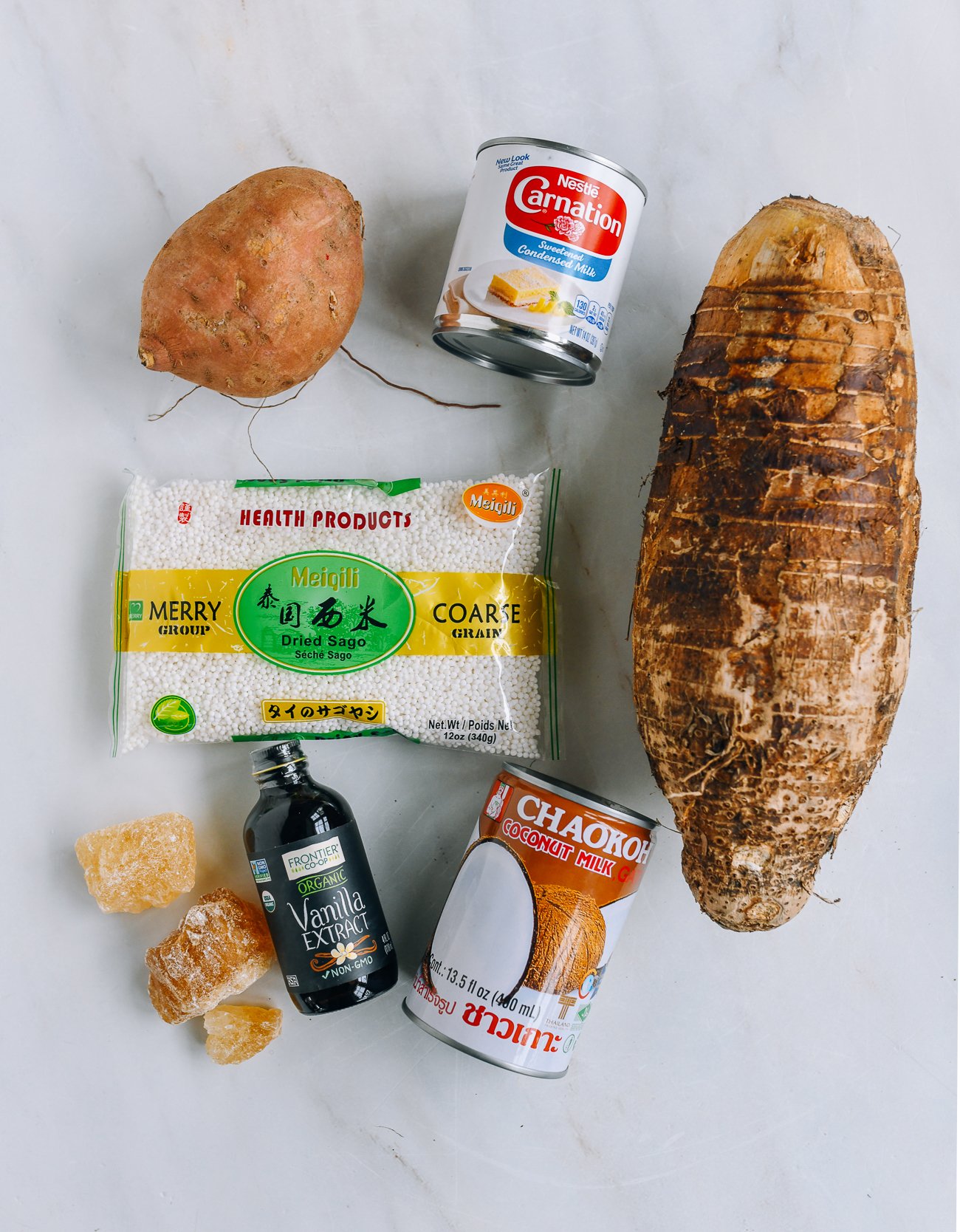
Making a Case for Dessert Soups
Let’s talk about dessert soup for a second. This concept may be foreign to you, or perhaps painfully familiar if you’re Chinese and weren’t always a fan of the slightly grainy red bean or mung bean soup that would show up at the end of a meal, or the white fungus soup that your mom told you to scarf down without complaint. (“It’s for your lungs!” she said. Or was it just my mom?)
An American kid, my thoughts of ‘dessert’ were completely overtaken by mental images of cake, cookies, and brownies, and I didn’t always appreciate these soups. But I have come to love them as an adult.
There doesn’t have to be a dessert to end a Chinese meal, but China does have a rich repertoire of lightly sweet soups that can be served warm or cold. They are delicious, and often warming, which aids digestion. They’re also not overwhelmingly sweet, and can actually contain nourishing ingredients that are quite good for you. (See: my mom’s Snow Fungus Soup with Pears. She wants you to eat it. For your lungs!)
Red bean soup is one of the best known Chinese dessert soups out there, and I love it too. But I think this taro sago soup deserves top billing.

All About the Taro
Taro may not look like much from the outside, with its knobbly, hairy football-like appearance. Some people describe it as potato-like. While that may be true of its texture, it has more flavor than a potato—a buttery fragrance that surprises and delights me every time I cook it.
It is truly the star of this soup. The supporting players—the small tapioca pearls/sago (which you can find dried in your local Chinese or Asian grocery store), coconut milk, sweetened condensed milk, and vanilla, all serve to create varying textures and complementary flavors in this tasty dessert.
cooking taro
Like potatoes, you must boil taro starting with cold water. This allows the heat to gradually penetrate the taro chunks, resulting in even cooking. Otherwise, the outside of the taro will be cooked, while the inside is still raw. Half-cooked taro = mealy texture in your soup. Avoid catastrophe, and start with cold water.
Recipe Instructions
Fill a medium pot about two thirds of the way with water, and bring it to a rolling boil. Stir in the sago (don’t add it before the water is at a full boil!). Simmer for 20 minutes, or until the tapioca is completely translucent, which means it’s fully cooked. If after 20 minutes, the pearls still have a white center, turn off the heat, cover, and let the tapioca sit in the hot water for another 5-10 minutes, or until they’re fully translucent. Drain through a fine-mesh strainer, rinse in cold water to cool, then soak in a bowl of cold water and set aside.
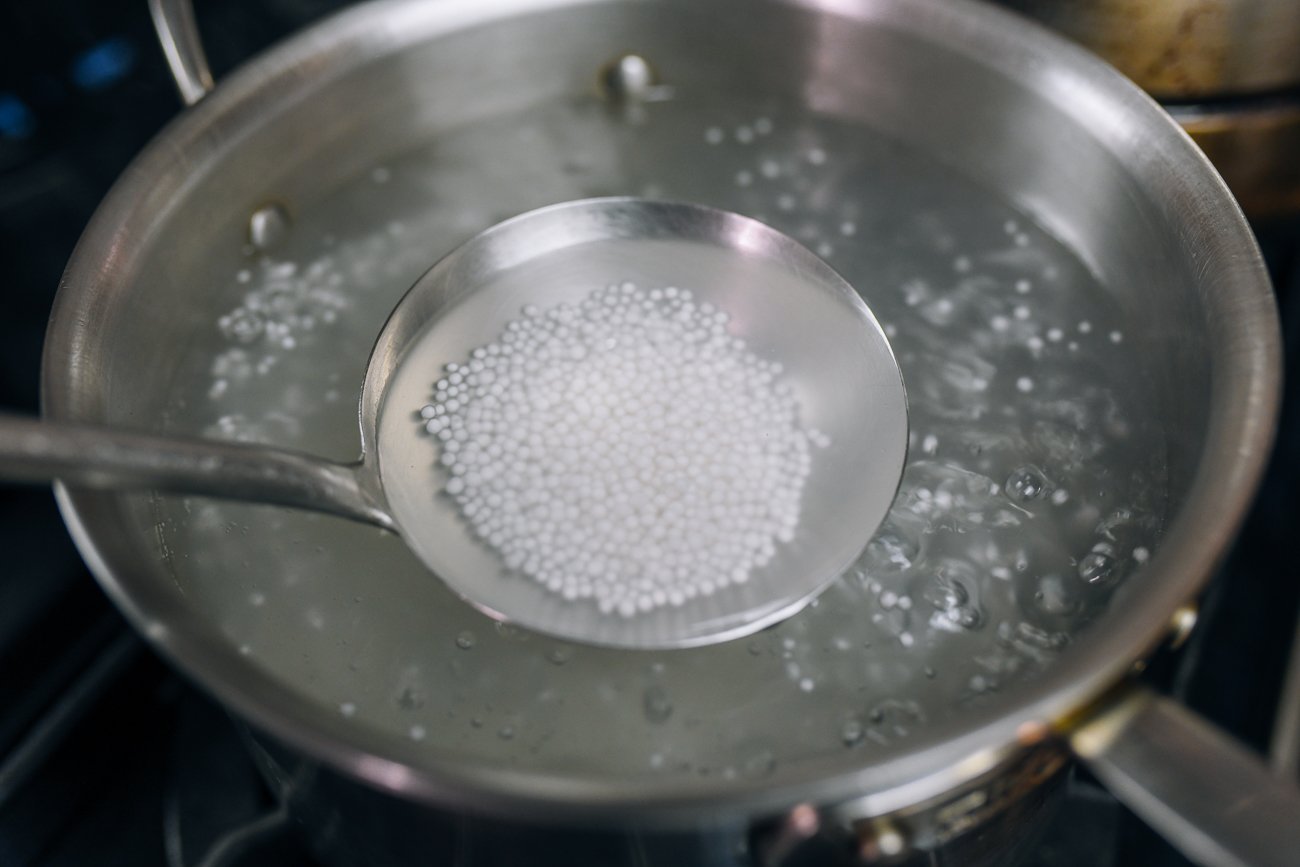
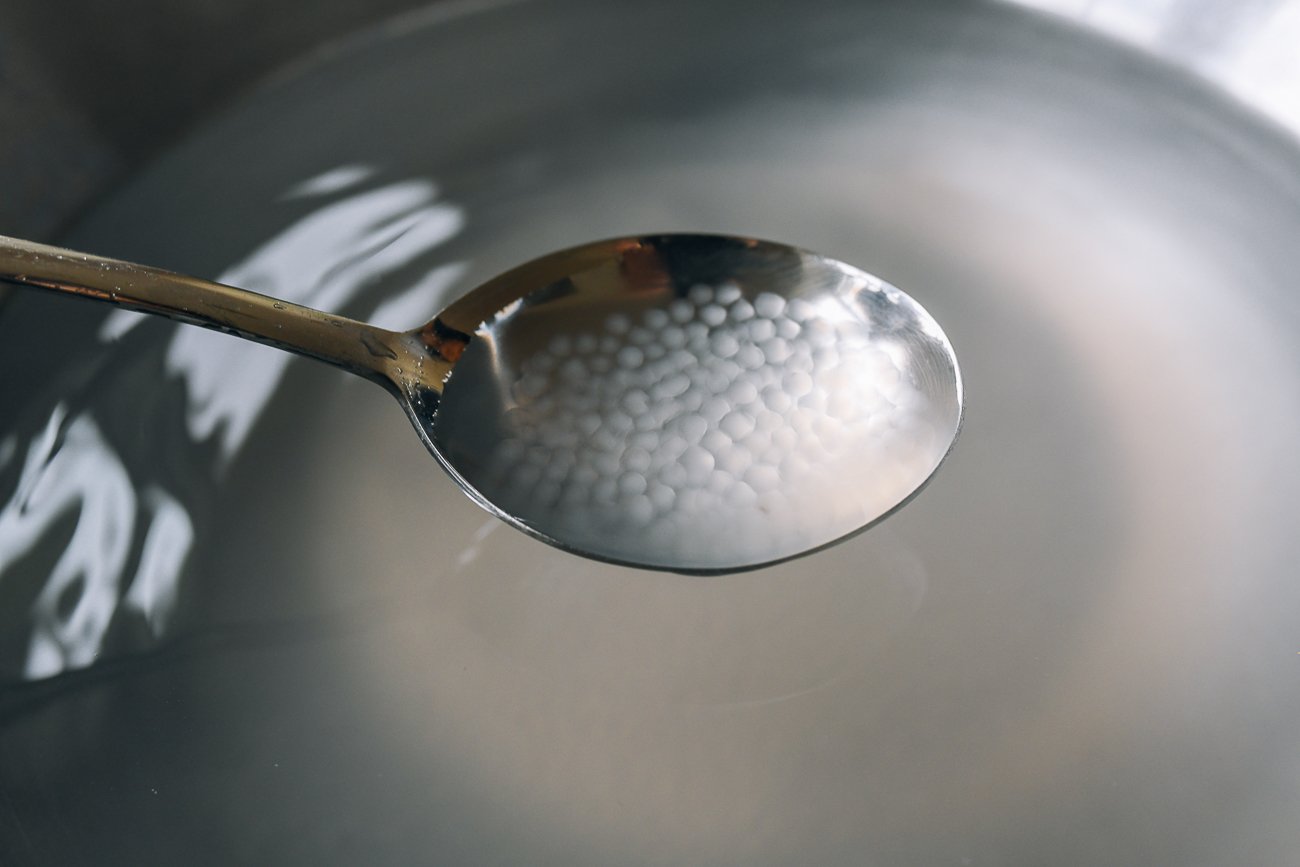
Take your taro and cut it in half or thirds crosswise. Place the taro pieces flat side down, and use your knife to carefully cut away the outer skin.
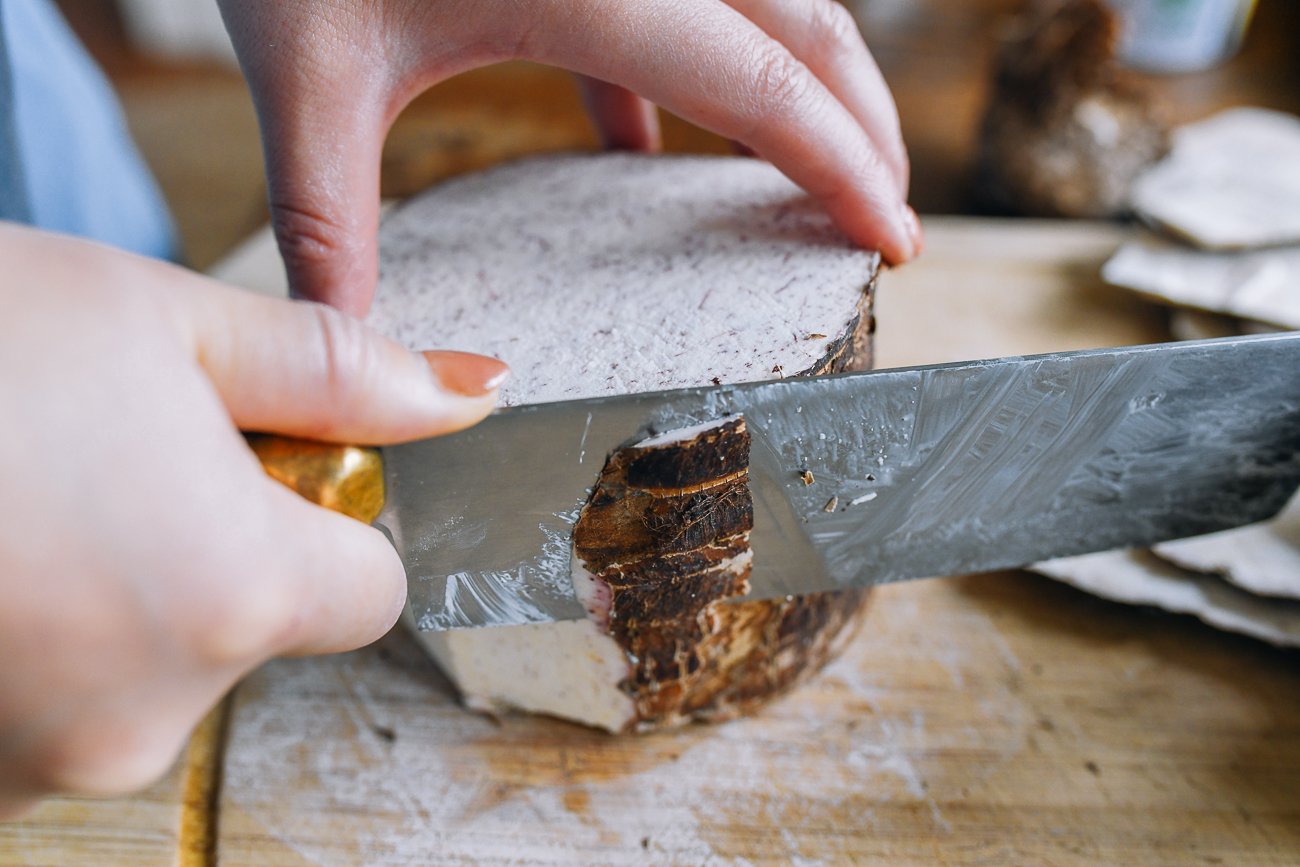
Dice about 1 cup (5 ounces) of taro into ¼-inch cubes. Cut the remainder of the taro into larger 1-inch chunks.
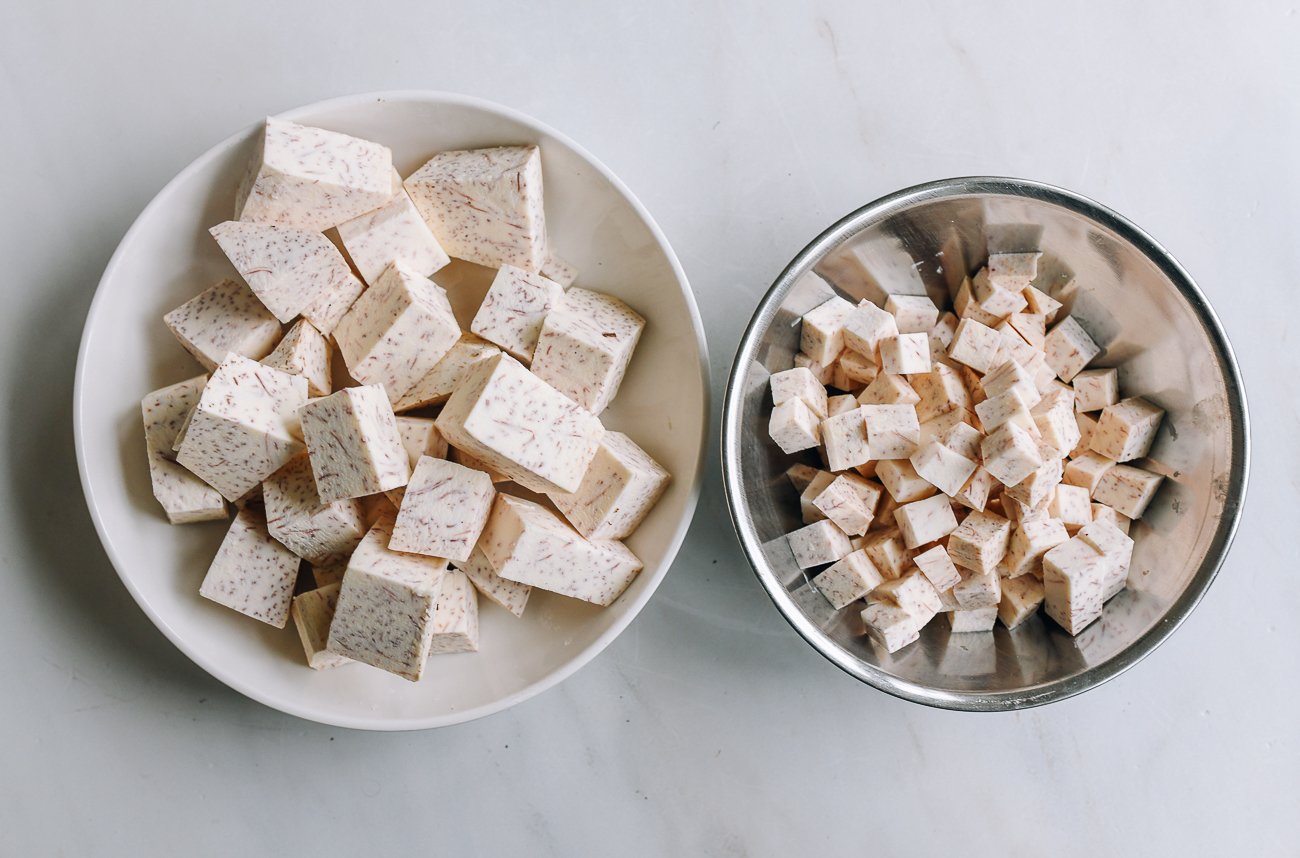
Sensitive Skin?
If you have sensitive skin, handling raw taro can sometimes cause skin irritation. I haven’t personally found this to be a problem, but you might want to rinse off your hands quickly after handling the taro, or use a clean kitchen towel to hold it in place while peeling and cutting it, rather than touching it directly.
Add 7 cups of water to a large pot along with the bigger 1-inch taro chunks and the rock sugar. Bring to a boil, cover, and simmer over medium heat for 20 minutes, or until the taro is very tender.
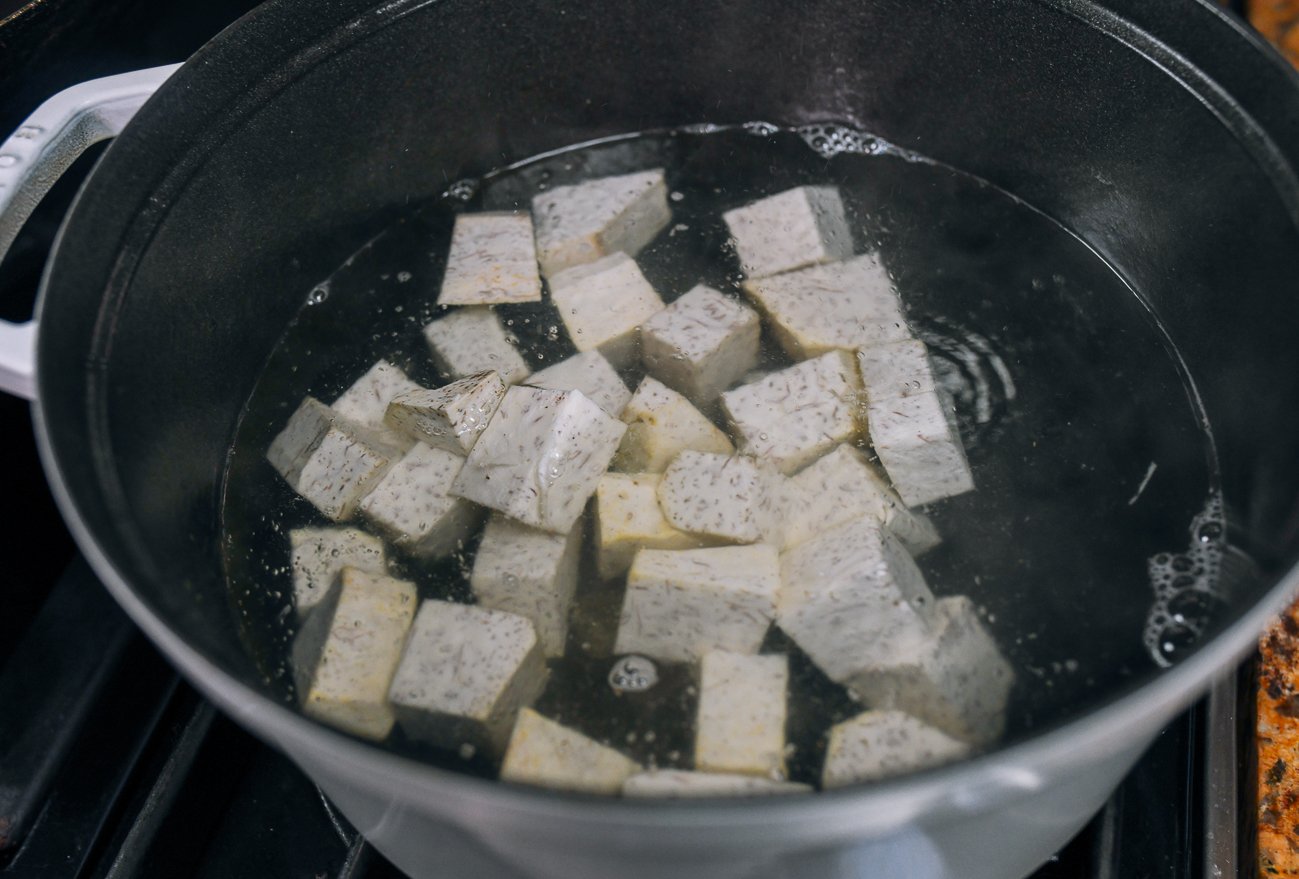
Use a potato masher to mash the taro until relatively smooth. The soup will appear somewhat thin at this point; it will thicken as it continues to cook.
Stir in the sweet potato and taro cubes. Bring to a low simmer, cover, and cook for another 10-12 minutes, stirring occasionally to prevent sticking or burning, until the taro and sweet potato cubes are tender.
Stir in the coconut milk, sweetened condensed milk, salt, and vanilla (if using). Cook for another 2 minutes.
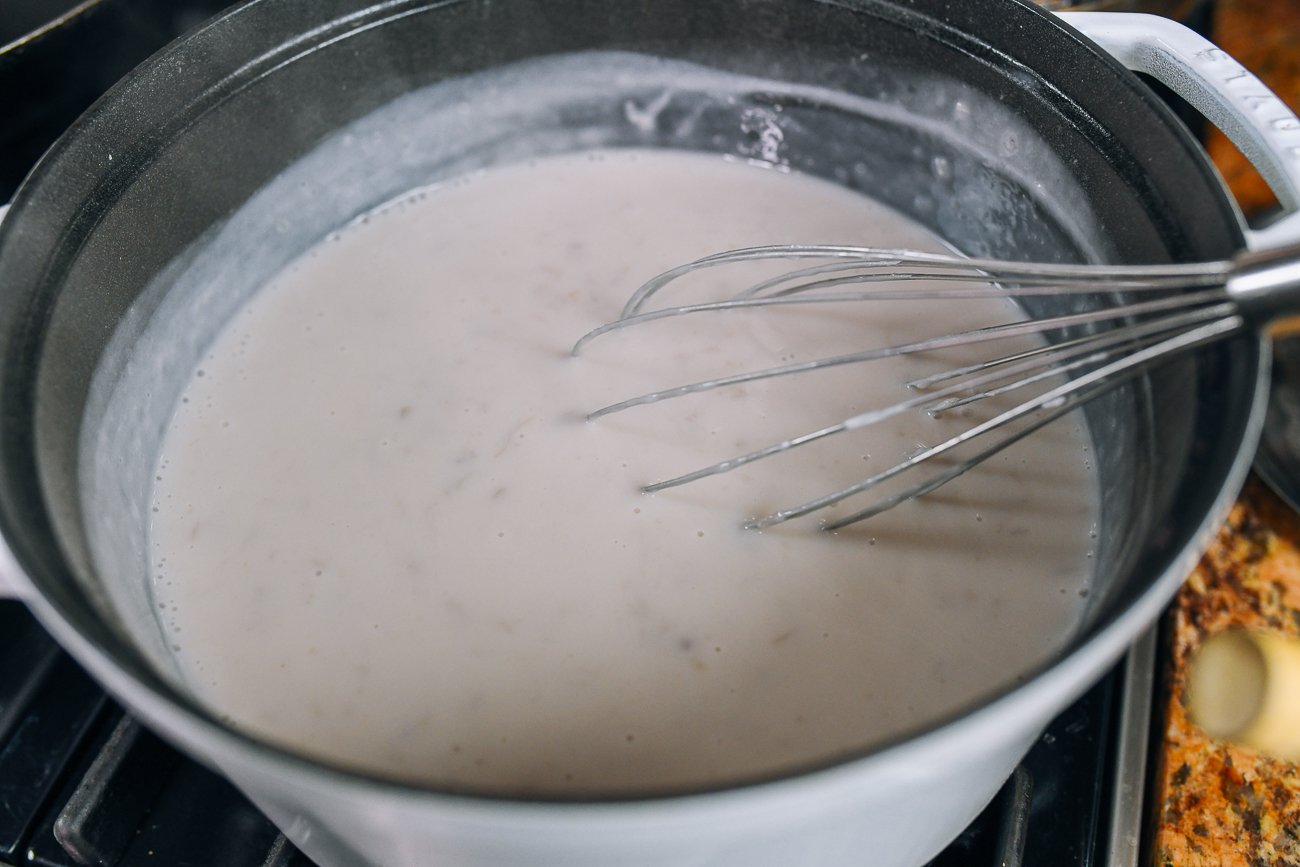
What to do with leftover sweetened condensed milk
Make an Avocado Smoothie!
Next, drain the sago, and stir it into the soup.
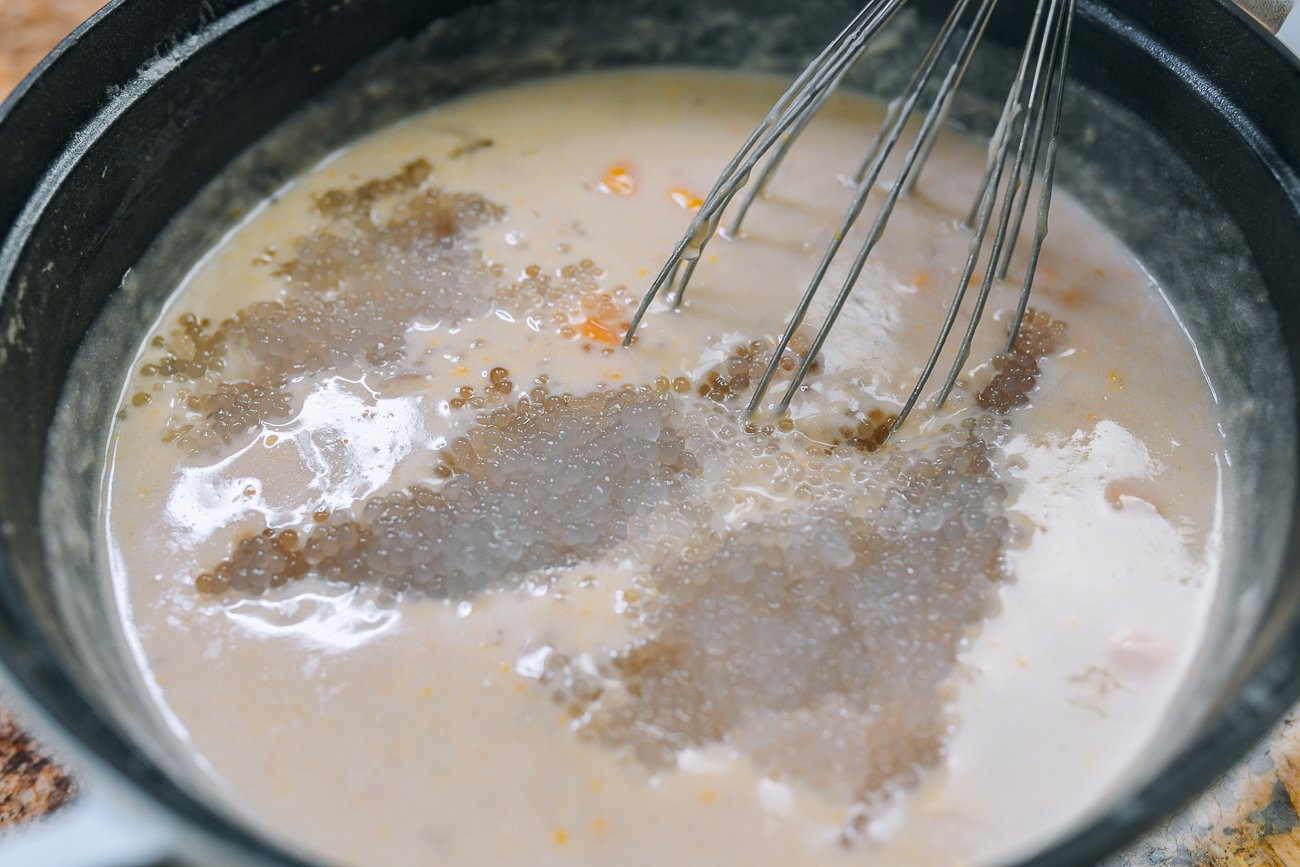
If the soup is too thick, add boiling water until you get the consistency to your liking. Serve!

This taro sago soup can be enjoyed hot or cold, but we prefer it hot! It also freezes pretty well. Just thaw in the refrigerator and heat in a pot until steaming before serving.
The texture won’t be quite as smooth as when it was fresh, but it’s a great way to deal with leftovers or make this ahead!
Taro Sago Dessert Soup
This taro sago (tapioca) dessert soup is a tasty and lightly sweet end to any Chinese meal. It’s also fairly simple to make, with just water and 8 other ingredients.
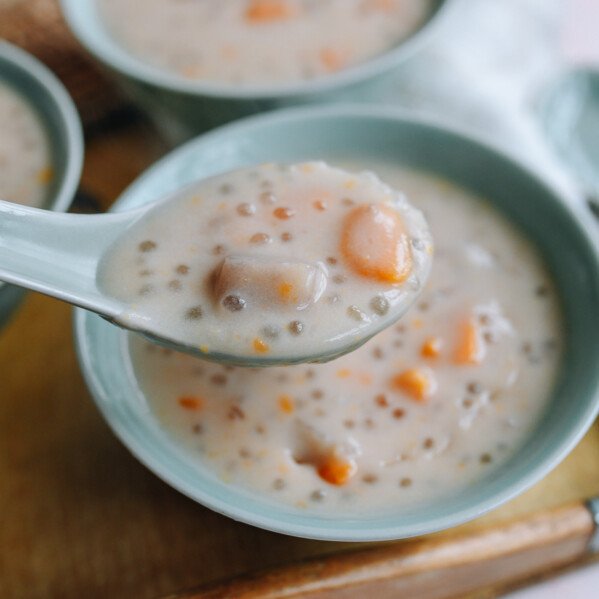
serves: 10
Prep: 10 minutes
Cook: 1 hour 5 minutes
Total: 1 hour 15 minutes
Instructions
-
Fill a medium pot about two thirds of the way with water, and bring it to a rolling boil. Stir in the sago (don’t add it before the water is at a full boil!). Simmer for 20 minutes, or until the tapioca is completely translucent, which means it’s fully cooked. If after 20 minutes, the pearls still have a white center, turn off the heat, cover, and let the tapioca sit in the hot water for another 5-10 minutes, or until they’re fully translucent. Drain through a fine-mesh strainer, rinse in cold water to cool, then soak in a bowl of cold water and set aside.
-
Take your taro and cut it in half or thirds crosswise. Place the taro pieces flat side down, and use your knife to carefully cut away the outer skin. Dice about 1 cup (5 ounces) of taro into ¼-inch cubes. Cut the remainder of the taro into larger 1-inch chunks.
-
Add 7 cups of water to a large pot along with the bigger 1-inch taro chunks and the rock sugar. Bring to a boil, cover, and simmer over medium heat for 20 minutes, or until the taro is very tender.
-
Use a potato masher to mash the taro until relatively smooth. The soup will appear somewhat thin at this point; it will thicken as it continues to cook.
-
Stir in the sweet potato and taro cubes. Bring to a low simmer, cover, and cook for another 10-12 minutes, stirring occasionally to prevent sticking or burning, until the taro and sweet potato cubes are tender.
-
Stir in the coconut milk, sweetened condensed milk, salt, and vanilla (if using). Cook for another 2 minutes.
-
Drain the sago, and stir it into the soup. If the soup is too thick, add boiling water until you get the consistency to your liking. Serve!
Tips & Notes:
This soup can be enjoyed hot or cold, but we prefer it hot! It also freezes well. Just thaw in the refrigerator and heat in a pot until steaming before serving.
nutrition facts
Calories: 290kcal (15%) Carbohydrates: 49g (16%) Protein: 4g (8%) Fat: 10g (15%) Saturated Fat: 8g (40%) Polyunsaturated Fat: 0.2g Monounsaturated Fat: 1g Cholesterol: 5mg (2%) Sodium: 178mg (7%) Potassium: 765mg (22%) Fiber: 5g (20%) Sugar: 14g (16%) Vitamin A: 2121IU (42%) Vitamin C: 5mg (6%) Calcium: 101mg (10%) Iron: 2mg (11%)
